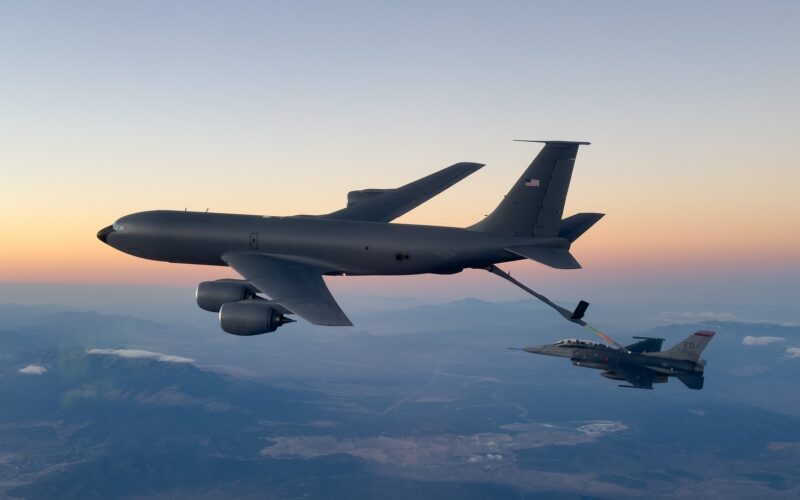The United States Air Force (USAF) has approved Merlin’s airworthiness plan for testing the Merlin Pilot on the KC-135 Stratotanker.
Announced on November 12, 2024, this milestone marks a significant step in the collaborative effort between Merlin and the USAF to evaluate the scalability of the Merlin Pilot’s advanced AI capabilities for large transport aircraft.
The approval signifies that Merlin’s systems engineering processes comply with the USAF’s stringent airworthiness standards. It allows the company to progress to the next phases of integration, finalizing aircraft design, and testing operations in coordination with the USAF Air Mobility Command (AMC) and Air Force Materiel Command (AFMC).
“We’re building the Merlin Pilot to not just meet safety standards, but redefine them. Integrating the Merlin Pilot onto one of most important aircraft in the USAF’s fleet is crucial to advancing military aviation into a new era of pilot efficiency and national security, as well as progressing autonomy at scale,” said Matt George, CEO and founder of Merlin.
With this approval, Merlin aims to finalize the system’s design by the end of 2024, paving the way for ground tests, flight trials, and demonstrations scheduled for 2025. These stages will demonstrate the feasibility of deploying autonomous flight systems on large transport platforms.
The objective is to alleviate crew fatigue and the risk of human error by creating an AI copilot to take over certain tasks such as communication with Air Traffic Control. In parallel, Merlin is applying its solution to the C-130J Super Hercules transporter with the US Special Operations Command. In September 2024, the flight test campaign began for its certification-ready Cessna Caravan aircraft equipped with the Merlin Pilot.
Background on KC-135 and USAF tanker fleet modernization
Since the early 2000s, the USAF has prioritized modernizing its fleet of aerial refuelers, including the Boeing KC-135 Stratotanker, which has been in service since the 1950s. Following several stalled attempts, it launched a three-phase modernization strategy in 2007.
In 2011, Boeing secured a contract for the KC-X program, with an order for 179 KC-46 Pegasus tankers. The second phase, known as KC-Y, will involve the procurement of 75 additional aircraft, also based on a commercial airframe.
The final stage, KC-Z, aims to develop the Next Generation Air-Refueling System (NGAS), introducing a revolutionary tanker design focused on operating in contested environments. Early renders and airshow models suggest NGAS will emphasize stealth and autonomy.
Ultimately, the Merlin Pilot KC-135 testing advances Merlin’s AI-driven autonomy software but also supports broader product alignment in preparation for the NGAS.
The Airbus A330 MRTT, which is the primary competitor to the KC-46 Pegasus, is also developing Automatic Air-to-Air Refueling (A3R) capability. This technology is designed to minimize the role of the air refueling operator (ARO), allowing them to monitor the operation instead of actively carrying it out.
In July 2022, the MRTT became the first tanker to receive certification for automatic aerial refueling.

